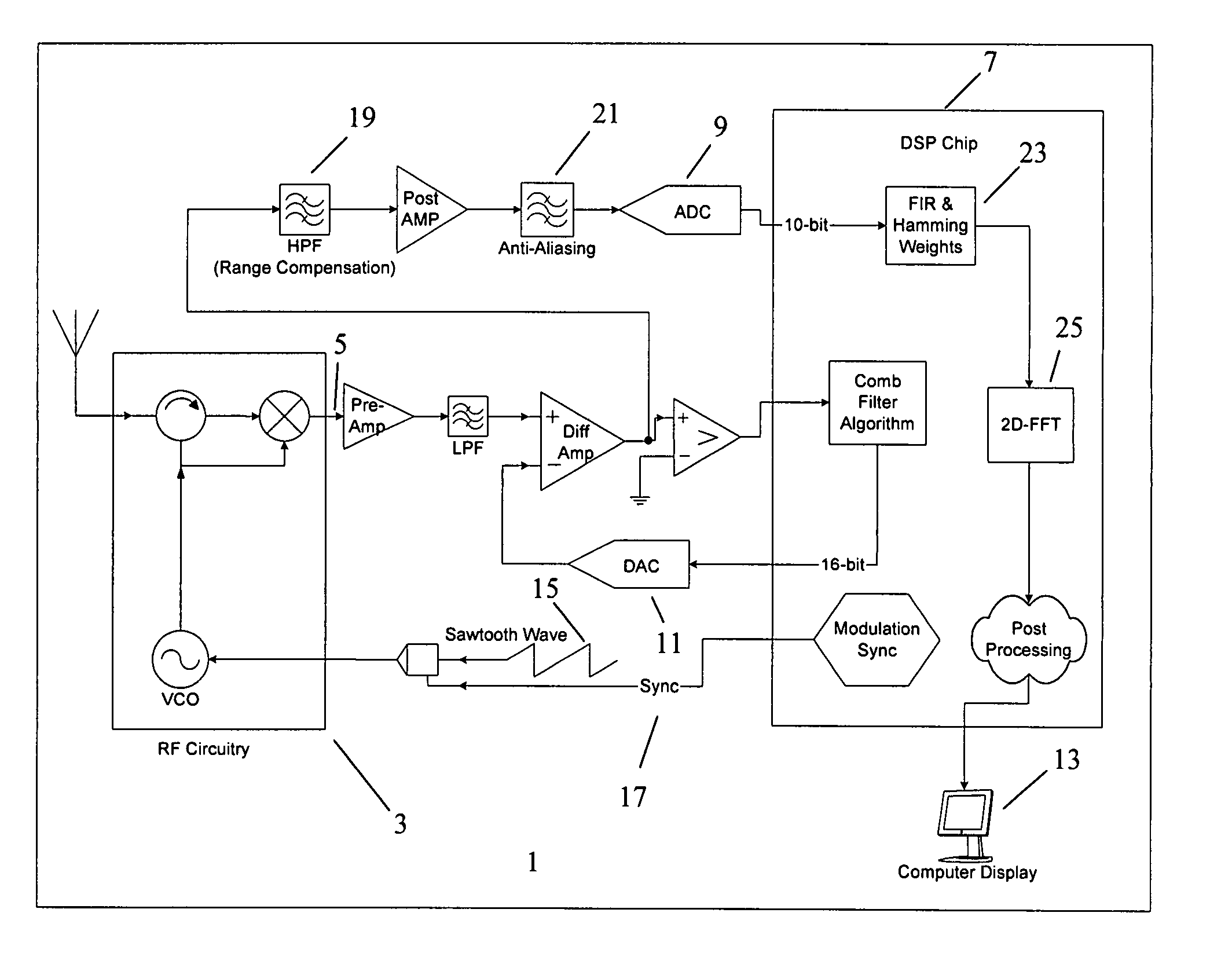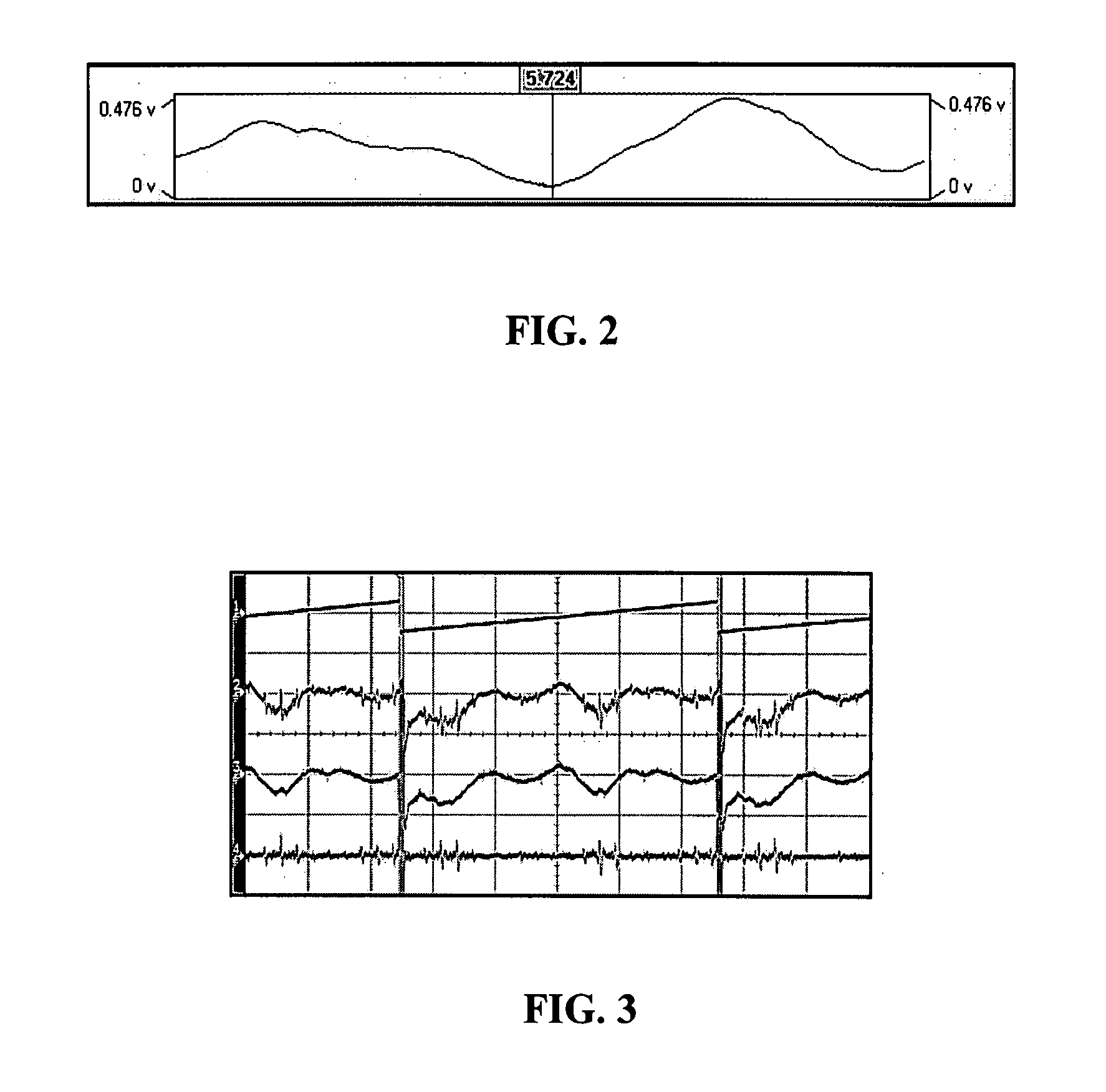Radar microsensor for detection, tracking, and classification
a microsensor and tracking technology, applied in the field ofradar microsensors for detection, tracking, and classification, can solve the problems of reducing affecting the detection accuracy of the system, so as to and improve the performance of the fmcw detection, tracking and classification algorithm. , the effect of improving the resolution of snr and velocity measuremen
- Summary
- Abstract
- Description
- Claims
- Application Information
AI Technical Summary
Benefits of technology
Problems solved by technology
Method used
Image
Examples
Embodiment Construction
[0031]The block diagram in FIG. 1 shows an embodiment of a FMCW system 1 in accordance with the subject invention. The FMCW system processes a receive signal 5 after homodyne detection 3 in the RF circuitry. Amplification and filtering are done in the analog domain before the signal reaches the digital signal processor (DSP) 7. Amplification and filtering are done while minimizing noise, as the signal strengths are expected to be very low at longer ranges for the detection signal. The DSP can control all of the timing of the system so that all components run off the same system clock and are always in synchronism.
[0032]A key component of this system is the DSP 7. In a specific embodiment, this processor can do all of the Fast Fourier Transform (FFT) processing and can also do any other digital tasks required in the system. In an embodiment, the DSP is flexible and can be programmed quickly and easily. Before the DSP analyzes the receive signal, the receive signal is first amplified ...
PUM
 Login to View More
Login to View More Abstract
Description
Claims
Application Information
 Login to View More
Login to View More - R&D
- Intellectual Property
- Life Sciences
- Materials
- Tech Scout
- Unparalleled Data Quality
- Higher Quality Content
- 60% Fewer Hallucinations
Browse by: Latest US Patents, China's latest patents, Technical Efficacy Thesaurus, Application Domain, Technology Topic, Popular Technical Reports.
© 2025 PatSnap. All rights reserved.Legal|Privacy policy|Modern Slavery Act Transparency Statement|Sitemap|About US| Contact US: help@patsnap.com



